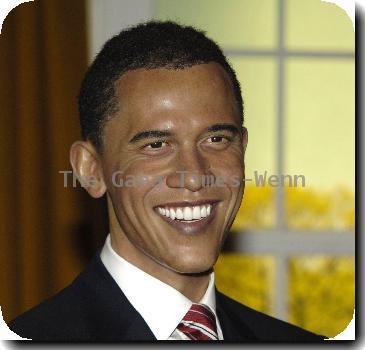As Bernanke awaits Senate vote on 2nd term, Fed weighs how and when to remove stimulus money
By Jeannine Aversa, APTuesday, January 26, 2010
Fed mulls exit plan as Bernanke awaits a 2nd term
WASHINGTON — With his prospects for another term brightening, Ben Bernanke will lead the Federal Reserve this year in pulling back the stimulus money it pumped out to fight the financial crisis that erupted in his first term.
The challenge will be how and when to do so.
At their first meeting of the year, Fed policymakers are likely weighing such matters, including which tools to use. The officials began meeting Tuesday and will issue a policy statement Wednesday. It’s not known whether they will signal their timing and strategy to reverse course.
On Thursday, the Senate has scheduled a vote on Bernanke’s confirmation for a second term. The vote requires a 60-vote majority in the 100-member Senate to overcome procedural obstacles from Bernanke’s Senate critics. But Bernanke appears to have solidified his support in the Senate after the White House stepped in to quell rising opposition late last week.
As Bernanke awaits his fate, the Fed is all but certain to leave its key bank lending rate, which affects consumer loans, at a record low near zero. Economists also expect the Fed to renew a pledge to hold the rate, called the federal funds rate, at record lows for an “extended period” — viewed as at least six months.
But some analysts don’t rule out the possibility that the pledge could be watered down or dropped entirely. Doing so would signal to Wall Street and Main Street that the Fed will be moving toward boosting borrowing costs to prevent inflation.
The funds rate has been the Fed’s main tool to influence the economy since the 1980s. But in the wake of the financial crisis, it could lose its influence. Instead, the Fed may soon rely more on another tool: boosting the rate it pays banks on the $1 trillion in excess reserves held at the central bank. That would raise borrowing costs for companies and ordinary Americans.
Bumping up that rate, now at 0.25 percent, would give banks an incentive to keep money parked at the Fed, rather than lend it. Short-term rates would rise. And economists say so would rates tied to commercial banks’ prime rate, which affects many consumer loans. The federal funds rate would rise, too.
Paying interest on excess reserves helps stabilize the funds rate when the financial system is awash in cash, as it is now. It’s a relatively new tool for the Fed, having been authorized by a 2006 law. Many foreign central banks rely on it. The Fed started paying such interest at the height of the financial crisis in October 2008.
It’s unclear whether the Fed will signal Wednesday that this will become the preferred lever to influence economic activity, employment and inflation. But it’s a tool investors and economists will closely monitor in the year ahead.
With the worst of the financial crisis over, the Fed is gradually moving to remove some of the stimulus money before it can trigger inflation. Some analysts think the Fed might bump up the rate it charges banks for emergency loans. That rate, called the discount rate, is only 0.50 percent. Such a move wouldn’t affect interest rates charged to consumers and businesses. Still, it would likely spook Wall Street. Investors would see it as a step toward higher interest rates.
Bernanke’s term expires Jan. 31. Bolstered by a White House lobbying effort that included President Barack Obama, Bernanke’s chances for a second four-year term improved markedly over the past few days. First, he must get 60 votes to break a filibuster and then needs a simple majority to win confirmation.
Some senators were prepared to help him get past the filibuster but vote against him on final passage.
The White House and key Senate leaders predict he’ll be confirmed. Opponents — a mix of Democrats and Republicans — are angry over the Fed’s role in bailing out Wall Street firms. They also blame Bernanke for failing to detect and address problems, especially a housing bubble, that led to the crisis.
With credit clogs easing, a handful of emergency lending programs set up during the crisis are set to expire Feb. 1.
Most of them haven’t been used in months by banks or other firms as credit conditions have improved. Those programs include Fed efforts to backstop the “commercial paper” market. This involves short-term financing used to pay salaries and supplies. Another program slated to end bolstered the money market mutual fund industry.
Fed programs to provide emergency loans to investment firms and another program for financial institutions to swap risky securities for super-safe Treasury securities also will end Feb. 1. And the Fed will be winding down a “swap” program with other central banks to provide them with U.S. dollars, which had been in high demand during the crisis.
The winding down of these programs shouldn’t have much economic impact because most have fallen out of use. But investors and consumers are paying more attention to a big economic revival program: the Fed’s purchase of mortgage securities from Fannie Mae and Freddie Mac, as a way to keep mortgage rates down.
The Fed is on track to buy $1.25 trillion in those securities by the time the program is scheduled to end at the end of March. But the Fed hasn’t ruled out continuing to buy mortgage securities after then to support the economy. Some fear that the end of the program will lead to higher mortgage rates, hobbling home sales and further damaging the still-weak housing market.
A recovery from the worst recession since the 1930s is under way, helped by the enormous government stimulus aid. But some question whether the recovery can last once those supports are pulled. And unemployment, now at 10 percent, is likely to remain high and drag on the recovery. Meanwhile, lending is still not back to normal. Banks are still failing.
Against that backdrop, Bernanke and his colleagues need to tread delicately.
Reeling in the stimulus too soon risks short-circuiting the recovery, sending unemployment higher. Move too late, and inflation could be unleashed.
“I think it’s premature to send any signal to the marketplace that the Fed is getting ready to raise rates,” said Mark Zandi, chief economist at Economy.com. “The economy is still fragile.”
__
Associated Press Writer Jim Kuhnhenn contributed to this article.
Tags: Barack Obama, Filibusters, North America, Prices, Recessions And Depressions, United States, Washington



